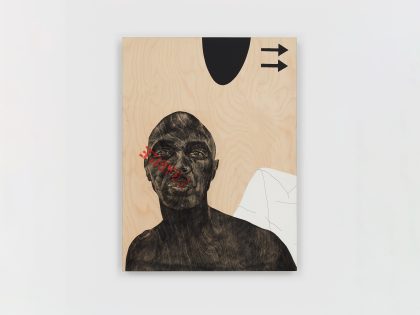#ICANTBREATHE

A group of police officers carrying out a stop and frisk in Brownsville, Brooklyn.
One morning last semester at John Jay College in New York City, I asked my students how many of them had ever been stopped by the police. All of them raised their hands, and we fell into a spirited conversation about the constitutionality of “Stop and Frisk” and the fine distinctions between reasonable suspicion and probable cause. Later, I remembered, most of my students had told me that they knew nothing about the march to Selma, the Freedom Riders in Mississippi, or the student-led protests in Greensboro, North Carolina. They understood injustice and how it impacted their communities, but had little historical context for institutional bias and the struggles that had failed to end it.
The personal, they say, is the most powerfully political. Such a moment happened last week when, in response to the non-indictment of Officer Daniel Pantaleo in the Eric Garner case, Brooklyn Borough President Eric Adams publicly shared his first encounter with police brutality in Jamaica, Queens. Chased into a stairwell, the 15-year-old Adams laid unarmed and unprotected as several police officers kicked him over and over in the groin. Adams relived the painful experience for years after, cringing every time he saw a police car. A generation later, it remains the fuel for Adams’ crusade to transform police practices from within.
Listening to the story, I realized what had been absent from my conversations about race, social discourse, policing, and the law. A few students in my class had admitted that they had faced daily harassment. Others had surely witnessed violent acts but did not vocalize this. When they spoke about the police – some detached, others angry – they characterized officers on patrol as an unwelcome presence in their neighborhood that filled them with discomfort. There was fear beneath these comments, deep-rooted in a lifetime of structural violence and suffered indignities, and it had become elephant in the room. I did not feel prepared to tell them that it would all be ok. But without an acknowledgment of the anxiety of their lives, it was no wonder my students were reluctant or unable to make connections between Mississippi attack dogs, fire hydrants, and lynch mobs and the indignities they face today.
It is too early to tell what the outcome of the emerging Ferguson-Garner citizen action movement will be. But one thing is clear: we will continue to feel its impact deeply as it empowers us to break shared silences and testify to the uncertain and traumatic conditions in which our youth are growing up. Phillip Agnew, who led a student-led civil disobedience movement in Florida following the Trayvon Martin killing, has already blazed this path with the Dream Defenders. The organization’s website sports bullet-proof vests for youth ages 12-18 and a spoof video of a black mother strapping her reluctant son into the vest. It is an eerie commentary on habitual terror and the way we have internalized it.
The message for change has begun to sink in at all levels of society. At a lawyering conference in June 2014 organized by the Center for Constitutional Rights’ Bertha Institute, Agnew, with a sermonic fire in his voice, called upon public interest lawyers to reach deep and find an emotional commitment to their work. “Those with the will to win, will win,” he said. “How radical are you really prepared to be?”
The death of Eric Garner and Michael Brown, the failure to indict, and the patronizing debate over whether Garner ought to have resisted being arrested for the thirty-fifth time have given us a laser-sharp focus around which to carry these messages forward – the need to eradicate the broken policies that have disproportionately targeted African-American, Native American, and immigrant communities across this country leaving them in debilitating fear for too long. People have come together just to shout: #WeCantBreathe.
But as Agnew and Adams have shown us, even within institutions dedicated to the pursuit of justice, the work of speaking out, healing, and organizing can be overlooked. A significant percentage of John Jay students aspire to careers in law enforcement. Protest movements should call upon these students. If they can see Eric Garner’s death as fuel for their ambitions, imagine a future that goes beyond body cameras, think critically about incentives for police to undergo training and embrace the dignity of the policed, they will embody the radical leadership that we need. There can be no effective policy solutions that don’t empower stakeholders and victims.
Organized, non-violent action remains the first step for moving policy-makers towards the recognition of the root of our problems, because it is the only means by which intergenerational, diverse citizens and partners can model their collective courage. My hope is that the students of the City University of New York and elsewhere in the city (and the country) can find the heart to critique the system, despite being robbed every day of their breath.



















